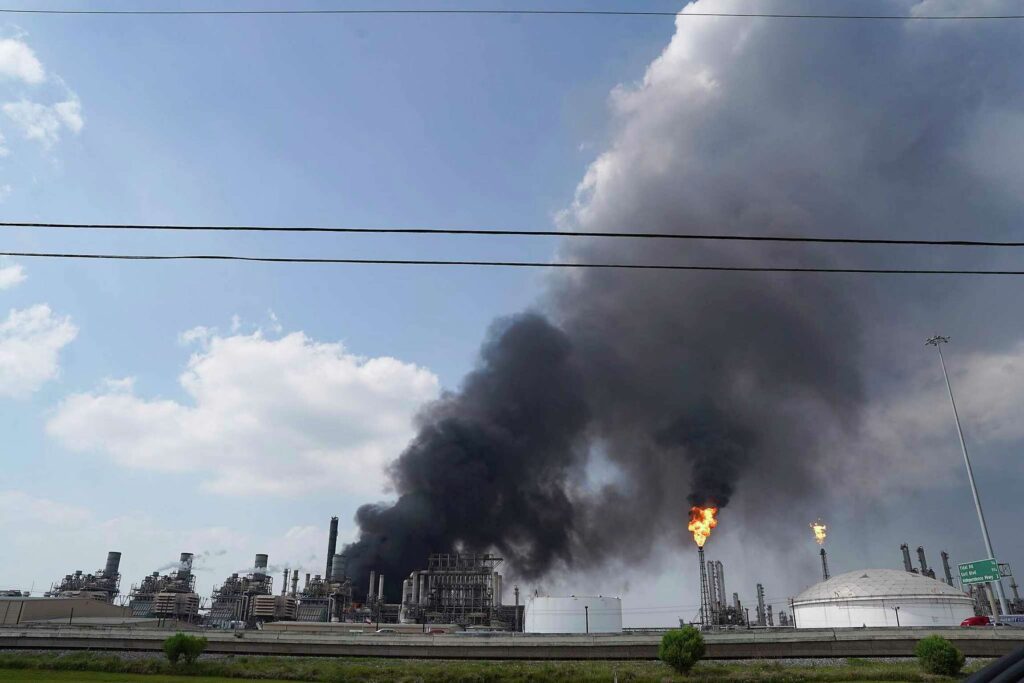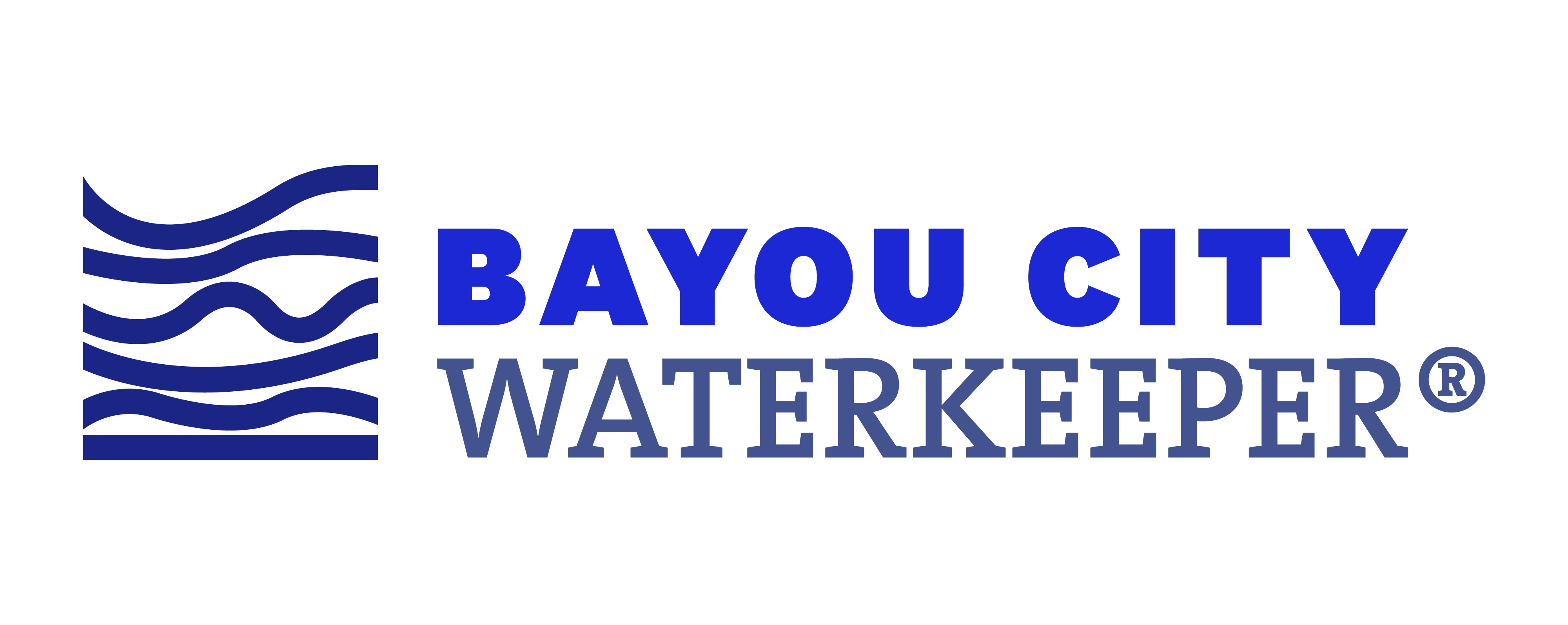This past weekend, a fire erupted at the Shell facility in Deer Park due to a chemical explosion. Fifteen workers were injured, black smoke and flaring from the facility were visible on the horizon, and many of us were left short of breath. On Sunday, Shell announced that the runoff water from fighting the fire – as much as 11,000 gallons per minute – had “exceeded” the facility’s wastewater storage capacity and that they would begin directing runoff water from the facility into the Houston Ship Channel as a “controlled discharge.” The Ship Channel, located about two miles from the facility, connects Buffalo Bayou to Galveston Bay.

During these disasters, the impacts of air pollution are more visible to us. We see fire. We see black smoke. We know what it feels like to shelter in place. Petrochemical facilities are well-known sources of air pollution – and though less discussed, they are also major sources of water pollution. The impacts of water pollution, however, are often less visible to us but are equally concerning for the health of local communities and ecosystems.
Petrochemical facilities like Shell collectively discharge nearly half a billion gallons of wastewater every day into rivers, streams, and estuaries across the country. While this wastewater should receive full treatment, environmental standards are often too lax or not enforced, meaning these discharges carry with them harmful chemicals which impact nearby communities – who are more often than not lower-income communities of color. During major storms like Hurricane Harvey, this pollution reaches all of us, as floodwaters carry pollution from facilities along the Ship Channel into our communities.
(Read more about our current lawsuit to set limits on harmful chemicals like cyanide, benzene, mercury, and chlorides in the billions of gallons of wastewater pouring out of U.S. oil refineries, chemical plants, and factories that manufacture fertilizer, plastics, pesticides, and nonferrous metals.)
The Houston Chronicle reported in 2016 that communities across our region experience a chemical disaster every six weeks, on average. And with each of these disasters, our air and water are polluted in ways that are difficult to measure. As another example, 2019’s ITC fire (International Terminals Co.) darkened our skies with smoke, and more than 130,000 gallons of firefighting foam were used to put out the blaze. Much of this ended up in the Ship Channel, and this foam contained PFAS, a manmade “forever” chemical. PFAS cannot be broken down in local waterways and causes many adverse health effects.
While the EPA tested water for PFAS after the ITC fire and detected PFAS above regulatory limits for drinking water, there was no baseline data for comparison, making it difficult for researchers to assess whether the PFAS was from the incident or was already present from other sources. Further hindering our understanding of the true effects of this massive discharge was that PFAS is not sufficiently regulated. EPA currently is working to create better rules to regulate PFAS, including a current rulemaking which may designate certain PFAS compounds as hazardous substances under the Comprehensive Environmental Response, Compensation, and Liability Act (CERCLA).
(Read more about the community-based water monitoring project which found 83% of the waters tested across the country, including those in Houston, were contaminated by dangerous PFAS chemicals.)

Both the ITC and Shell facilities (and so many other facilities creating disasters) had something else in common: a track record of environmental violations that had gone unenforced, due to undeserved deference from the agencies that are supposed to be protecting communities – not the bottom line of harmful regulated industries. For fenceline communities, living in Deer Park and near the Ship Channel, who experience disproportionate impacts of pollution by petrochemical companies, TCEQ and EPA need to uphold their missions, and implement plans and practices that make our region safer. It has been reported that the EPA, Harris County Pollution Control, the Texas Commission on Environmental Quality and Shell will be testing local water in the coming days and weeks to monitor potential impacts of the fire. In Houston, decision makers have treated these disasters as the cost of living in the Petro Metro – but when will enough be enough?
Statement of Ayanna Jolivet Mccloud, Executive Director of Bayou City Waterkeeper
“While we wait for agencies and Shell to share monitoring data, fenceline communities are left to wonder whether our water and neighborhoods are safe — and grapple with questions of what it means to live in the shadow of petrochemical facilities. Water is essential to everything we do, especially in the Bayou City. In Houston, the Shell fire is proof, once again, that water and oil don’t mix. We must see the health impacts on fenceline communities that are continuously impacted by these disasters, call out the ecological impacts to the habitat in our waterways, imagine a world beyond fossil fuels, and embrace a just transition to renewable, cleaner sources of energy.”
Key media coverage and resources:
TCEQ Monitoring and Updates related to Shell Deer Park
Reignited fire at Shell Deer Park facility has been extinguished, officials say
Experts concerned about impact of Deer Park Shell fire on people of color
Shell Chemical Plant dumps wastewater from fire into ship channel; Here’s how experts say it may impact sea life
Houston-area Shell refinery had troubled history before fire
Houston Chronicle Editorial: Who’s counting all Texas’ explosions? Not the Chemical Safety Board
Environmental Integrity Project: Oil’s Unchecked Outfalls
Bayou City Waterkeeper protects the waters and people of the greater Houston region through bold legal action, community science, and creative, grassroots policy to further justice, health, and safety for our region.
